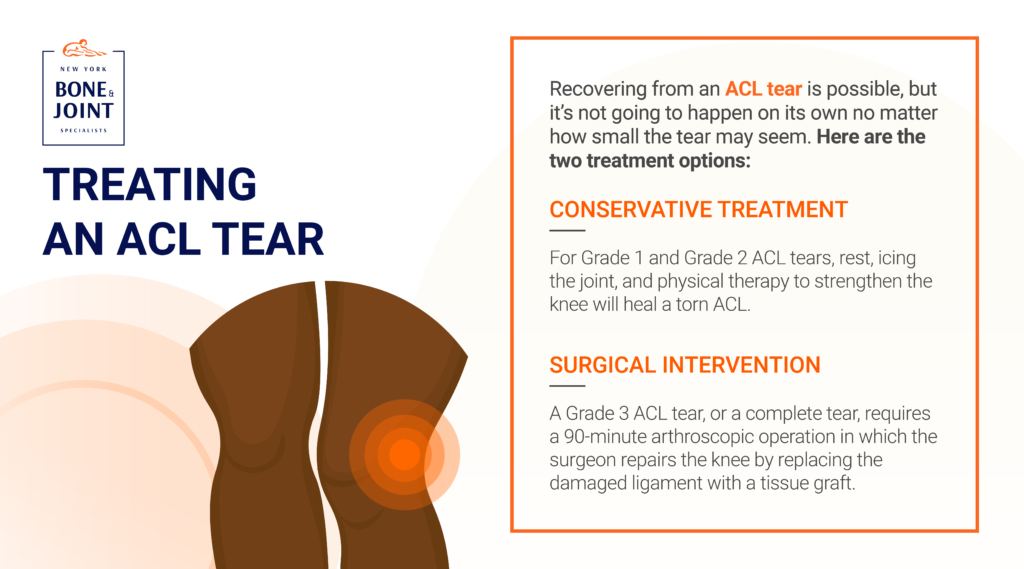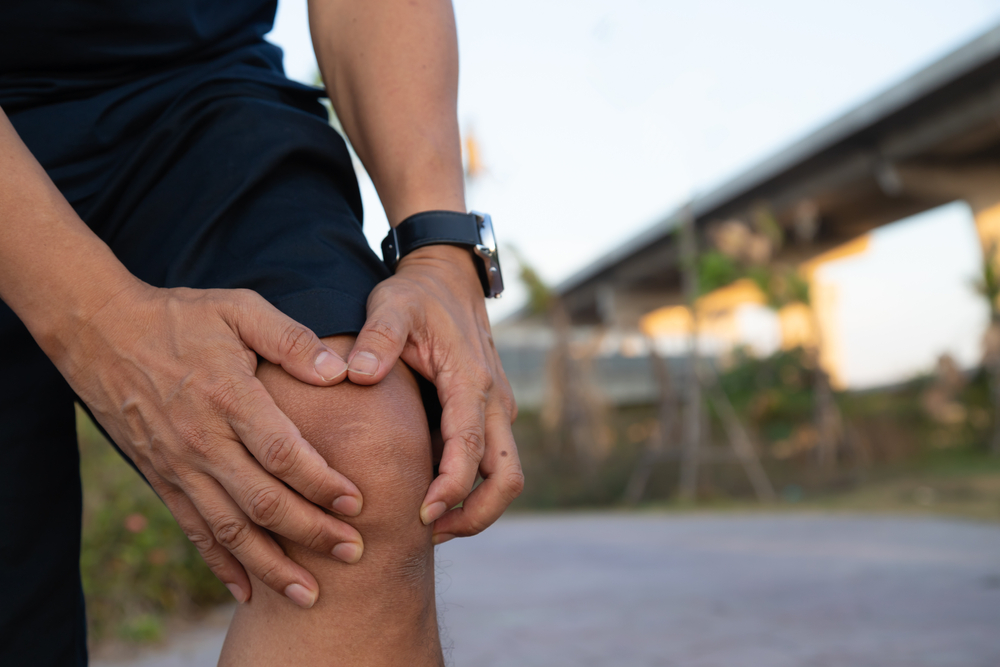Recovering from an ACL tear is possible, but it’s not going to happen on its own. Learn how treatment can help the process along.
Your knee consists of a complex network of bones and ligaments that hold them together. One of the most important of these ligaments is the anterior cruciate ligament (ACL), a rope of tissue connecting the shin bone (tibia) to the thigh bone (femur).
The ACL stabilizes the knee joint, but it’s also vulnerable to injury and tears, especially for athletes playing sports that demand sharp pivoting, jumping, or sudden stops. But it’s not just athletes who can injure their ACL — anyone is vulnerable if they twist their knee awkwardly. If you think you’ve injured your ACL, it’s important that you see an orthopedist immediately for diagnosis and therapy. An ACL tear will not heal on its own, but it responds well to treatment.
What Does an ACL Injury Feel Like?
Before you can get treatment for an ACL injury, you first have to know what an ACL injury feels like so you can identify it correctly. A common sign of an ACL tear or trauma is a loud popping sound in the knee at the moment it’s injured. That’s usually accompanied by swelling as blood rushes to the vessels in the ligament. You’ll also experience less stability in the knee or a buckling sensation when you try to put weight on the joint. Limited range of motion further indicates an ACL injury.
ACL tears aren’t particularly painful compared to some other injuries. However, you may feel pain when you bend your knee at a 90-degree angle or try to straighten it out. ACL tears sometimes happen at the same time as a meniscus tear, which causes sharp pain on the inside of the knee. A meniscus tear occurs when one of the two bands of cartilage lining the sides of the knee ruptures. Like an ACL tear, a symptom of a meniscus tear is a pronounced popping sound in the knee.
ACL tear diagnosis is done through an X-ray, which is used to rule a broken bone or other injury. An MRI can also give a picture of how severe the injury or tear is. Once your tear is diagnosed, your orthopedist will develop a treatment plan based on the severity of the injury.
How Are ACL Tears Treated?
ACL tear treatments depend on the type of injury you sustained and how active you are. ACL injuries are classified into three categories: Grade 1 is defined as a mild sprain of the ligament with no rupture, Grade 2 refers to a partial tear of the ligament, and Grade 3, the most serious form of injury, is a complete tear of the ligament. With immediate and proper therapy, any grade of ACL injury can be healed.
For Grade 1 and 2 injuries, you will typically be prescribed a conservative treatment. Rest, icing the joint, and physical therapy to strengthen the knee will heal the ACL. Even for more severe injuries, conversative treatment is the therapy of choice for those who don’t live an active lifestyle.
Unfortunately, a more severe ACL injury that falls under the Grade 3 category, meaning there’s a complete tear will require surgery — especially in athletes. This involves a 90-minute arthroscopic operation in which the surgeon repairs the knee by replacing the damaged ligament with a tissue graft.
After the surgery, you’ll need crutches for two weeks to keep pressure off the knee. A physical therapy program will begin soon after surgery. Although you may begin light jogging about three months into your recovery, you should refrain from any activity that will strain or twist the knee until it’s completely healed. Full recovery will take about six to nine months.

Visit the Knee Specialists to Heal Fast
New York Bone & Joint Specialists have years of experience in treating knee traumas including ACL tears. A painful knee can hinder your lifestyle whether you’re an athlete or not, so don’t delay treatment — especially since an ACL tear won’t heal on its own. If your knee is hurting, contact our office today for diagnosis and therapy.




